- StartUp Support
- Posts
- Basic Income Tax Modelling for Financial Forecasts
Basic Income Tax Modelling for Financial Forecasts
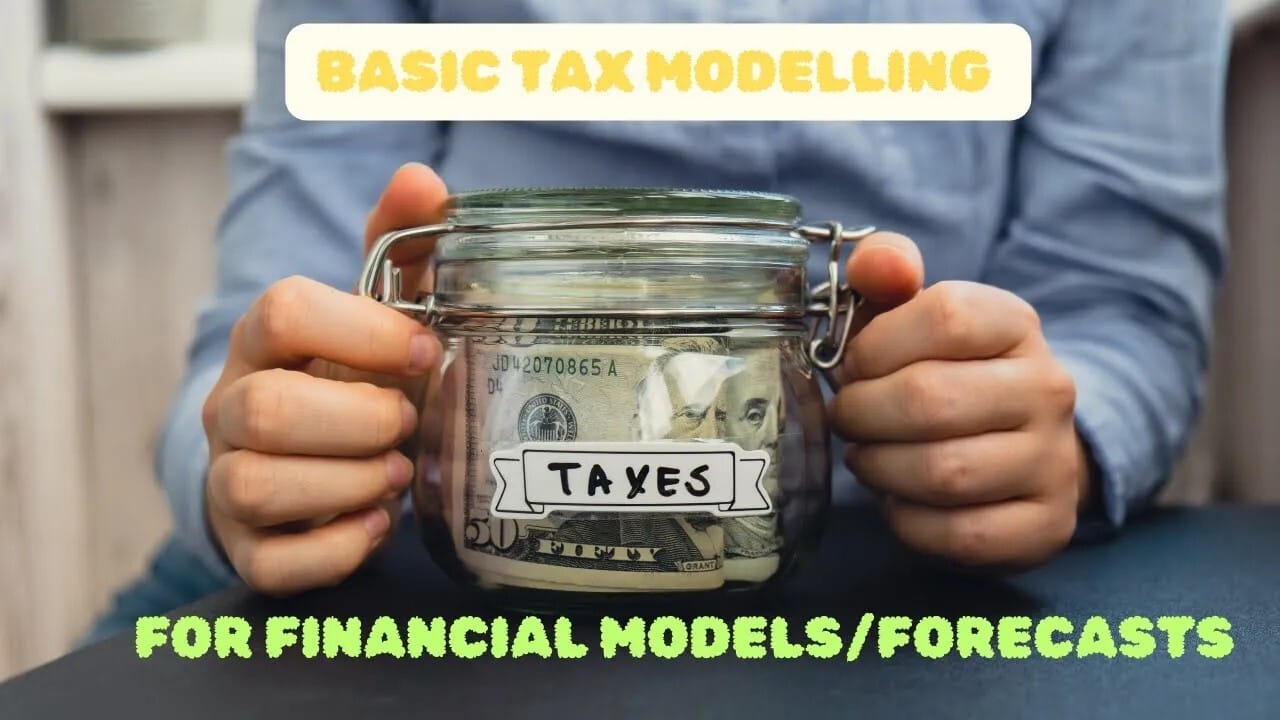
Basic Income Tax Modelling for Financial Forecasts
If you prefer a video version of this newsletter, click here
Introduction
In many jurisdictions, businesses must pay income taxes, usually based on the profits that the business makes. Hence as a business operator, it is imperative that you must forecast your potential income tax expense and payments.
So, what are the things that we need to think about while forecasting income taxes?
Before we get into that, if you would like access to a FREE generic income tax calculator for a business that incorporates all the points below, click here.
Factors to consider while forecasting business income taxes.
1. Understand the difference between accounting profits and taxable profit.
Day to day, a business will typically record its revenue, direct costs, operating expenses, and finance costs. Together, all these produce the accounting profit – the profit that the management reckons the business made.
The tax authorities, however, tend to take a different view to management and will usually impose rules around how to calculate taxable profits. Tax authorities might:
· Disallow certain expenses for tax purposes – The business might incur the expenses, but for tax purposes a business cannot offset those against revenues.
· Limit how much of an expense can be deducted for tax purposes e.g. interest expenses – This is typically in response to capital structures employed by businesses to try reduce their tax exposure
· Not tax certain types of income
The net result of all these is that the accounting profit and the taxable profit tend to be different. For tax forecasting purposes, a business should use taxable profits, rather than accounting profits.
Practical example
Consider a business with the following accounting results:
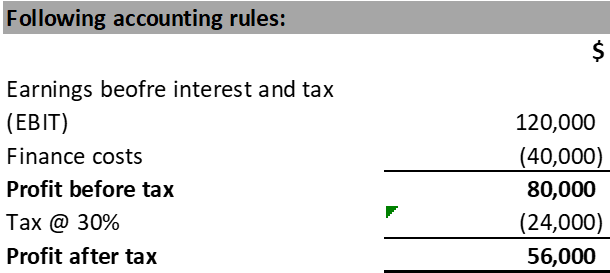
On a profit before tax of $80,000 and assuming a tax rate of 30%, this business would pay taxes of $24,000.
However, let us assume that this business operates in a tax jurisdiction where interest deductible for tax purposes is capped at 30% of earnings before interest and taxes:
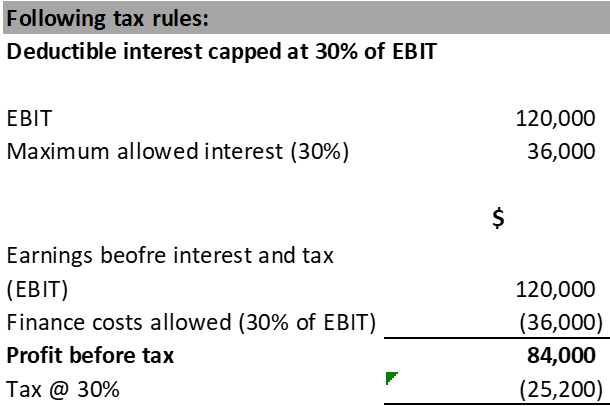
By applying the tax rules, we see that the tax expense should be $25,200, which is higher than the $24,000 we had calculated following accounting rules.
Had we followed the accounting rules we would have underestimated our income tax expense and payments.
2. The effect of historical tax losses
Many start-up businesses make losses in their initial years of operation. To encourage entrepreneurship many governments will not require businesses to pay taxes when they make losses.
As a further incentive, many governments will allow businesses to offset current profits with losses made in prior years and only pay taxes on the residual profits. We should therefore check if we can offset our current profits with prior losses.
Practical example
Consider a business with the following history:

If the government allows the losses made in years 1 and 2 to be offset against the profits in years 3 and 4, then the tax expense profile will look as follows:
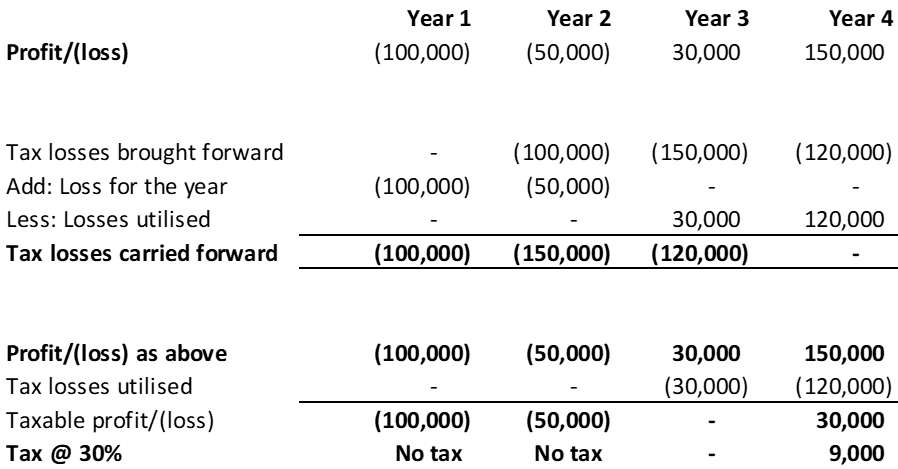
In Year 1 and Year 2, no taxes are payable because the business made a loss.
In Years 3, no tax is payable because the entire profit of $30,000 is offset against the prior accumulated losses of $150,000.
In Year 4, out of profits of $150,000, tax is only payable on $30,000 worth of profits because the $120,000 is offset against the existing losses from the prior years.
3. Prepaid Taxes
This is important for cash flow planning.
In certain circumstances tax authorities will require a business to pay advance taxes, i.e., before the actual income tax calculations and filings are done.
These usually take the form of instalment taxes or withholding taxes.
For forecasting purposes, we should record the tax payments when they are due (i.e. in advance), rather than when the tax fillings are done (usually much later), because this way we can get a more accurate cash forecast.
Practical example
Consider a business operating in a jurisdiction where the government requires customers to withhold 5% of invoiced amounts. In this instance, the withheld amount is paid directly to the government.
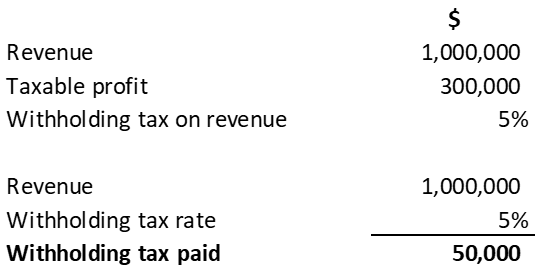
Customers are invoiced $1,000,000. However, the business only receives $950,000. The $50,000 goes straight to the government. For forecasting purposes, we show revenues of $1,000,000, but we only show $950,000 as cash coming in. The $50,000 is recorded as tax receivable as a current asset on the balance sheet.
Later when the tax calculations are done:

The actual tax expenses is $90,000 but remember $50,000 had already been paid to the government as withholding tax. The tax liability is therefore only $40,000. That is what appears on our balance sheet as current liability.
4. Tax rates
For forecasting purposes, we should use the currently enacted tax rates.
In instances where an increase in tax rates is expected, then it is more prudent to use the expected higher tax rates in our forecasts.
In instances where a decrease in tax rates is expected, it is more prudent to use the current existing higher tax rates, because the decrease in the tax rates is not within your control.
Happy forecasting!